Building Reliable Location-Based VR Attractions
Boost market longevity and maximise profits for your location-based virtual reality experience.

Location Based Entertainment | Manufacturing | Entertainment | Training/Simulation | eBook
15 minute read
What you'll learn with our free guide
Designing and building a successful LBVR attraction requires the mastery of various disciplines, such as game design, hardware integration, operation, maintenance, and more. Location-based VR developers and resellers need to understand how these elements interlink so they can make the most of the platform and maximise sales.
In partnership with LBVR entrepreneur and author, Bob Cooney, we've compiled the most essential best practices to put LBVR creators on the best foot forward for making attractions that will resonate with operators and players alike.
Learn:
- What to look for in a hardware partner.
- Tips when designing the best LBVR experiences.
- How to choose your headset.
- How to envision the entire chain, from installation through operation and repair.
- Key insights from VR luminaries, value-added resellers, and amusement operators.
Table of Contents
Introduction ›
Qualify Your Hardware ›
- Choosing Your Head-Mounted Display (HMD)
- Find Hardware Manufacturers With Proven Track Records
- Standardize the Hardware and Operation Experience
The Novelty of VR is Gone ›
- Pick Good Tech That Feels Invisible
- Bring on People Who Know How to Make Games
- Arm Developers With a Platform Built for the Future
- Focus on Simple, Approachable Experiences
- Create a Variety of Experiences
Envision the Entire Chain, From Set-up to Play ›
- Think About Your Player Onboarding Process
- Put Yourself in the Shoes of an Operator
The Takeaway ›
About HTC VIVE ›
About the Contributors ›
- Armando Lanuti
- Ben Davenport
- Bob Cooney
- George Smith
Introduction
Part video game, part theme park attraction, location-based virtual reality (LBVR) entertainment options blend the best of both worlds to create experiences unlike any other. From self-attended VR stations that provide easy-to-use, yet immersive arcade games and rides, to room-filling battles that pit teams of players against each other, the possibilities for LBVR are limited only by your imagination.
As the public continues to adopt VR at fun centers and in the home, this nascent entertainment genre will continue to expand, with a projected compound annual growth rate of 32.8% through 2027. Creating a successful LBVR attraction requires a keen grasp of the various components that must work in concert. You need to understand what your hardware is capable of and how game design can make or break your experience. You also need to envision how operators will install, run, and repair your attraction to make it as enticing as possible.
Those who take into account all of the links in the LBVR chain will stand to reap the rewards from this explosive new technology and will create meaningful experiences that resonate with audiences for years to come.
We have compiled this ‘best practices’ guide to help LBVR creators, value-added resellers, and VR developers understand how to navigate the unique challenges of this medium. We’ve brought together VR luminaries, LBVR manufacturers, and the operators working with LBVR right now. They’ll use their expertise to provide critical insight that will help you improve your attraction design, get the most out of your hardware, reduce potential pain points, and boost profits.
Qualify Your Hardware
Unlike traditional attractions or entertainment options, virtual reality is primarily driven by consumer product lifecycles — meaning average VR hardware lasts about two to three years on the market until you can expect to see an upgraded version. The following tips will help you scope the right hardware to realize a longer-lasting solution for happier customers.
Choosing Your Head-Mounted Display (HMD)
High-quality experiences are ultimately your competitive advantage when designing a successful LBVR attraction, especially as personal VR continues to increase its foothold in consumers’ homes. How you differentiate from at-home experiences depends on the capabilities of your chosen hardware: its specs, accessories, and development capabilities. Before deciding which hardware to choose, you may want to do some investigating for your particular use case.
Some considerations:
✓ Display quality for enhanced immersion
How does display field-of-view (FOV) and resolution compare? For reference, the average human FOV is around 130 degrees for each eye and 180 degrees with both eyes. Wider FOV and higher resolution screens will mean a clearer, more enjoyable experience for users.
✓ Durability to avoid longterm costs down the road
Which models are more susceptible to breakage? And how often? How much will repairs eat into the solution’s operating expenses? These headsets will be under a lot of abuse from the public, so identifying durable hardware is key.
✓ Performance specifications that reduce HMD degradation
Where do performance specs rank? Can they be modified or upgraded to maintain longevity? Investing in a higher-end headset with upgraded processors such as the Qualcomm Snapdragon X2 will enhance the life of the HMD features and will take longer to go out of date as the rest of the market catches up.
✓ Battery life for lower latency experiences
How well does the battery hold a charge? To achieve the most immersive experience, HMDs should be programmed to run at the highest frame rate possible which will drain the battery faster. Batteries must be able to hold a charge for the duration of experience or easily swappable to maintain consistent user throughput.
✓ Hygienic hardware for basic upkeep
How easy is the HMD to clean? Are components on the HMD detachable? Is the HMD compatible with solutions that disinfect your hardware such as Cleanbox ?
✓ Warranty coverage for unforeseen incidents
How do hardware warranties stack up against the competition? LBVR attractions undergo considerable wear and tear in daily operations, so ensure that the warranty will cover you when the hardware gets damaged.
✓ Unique but reliable accessories
Your solution may require the use of additional accessories to achieve the most immersive and realistic user functions, such as movement tracking , so your choice of HMD should capably and reliably support them.
Find Hardware Manufacturers with Proven Track Records
There are many hardware options available on the market, and while tech specs are important, they only tell half of the story. A positive sign of a good hardware partner comes from a track record of successful use cases specific to your industry. The right partner can mean the difference between a smooth development process and scrambling to find replacement hardware after discovering the manufacturer no longer supports your chosen model — or no longer exists.
Considerations:
✓ Manufacturer reputations
How long has the manufacturer been involved in the VR market? How long do they typically support products? Do they see VR as an important part of their business model, or are they simply trying to cash in on an emerging market? These questions will tell you whether the manufacturer is in for the long haul and willing to ensure the best possible experience for all its partners.
✓ Software that runs on the headset
Does the manufacturer provide software built for your use-case? Purpose-built software ensures the manufacturer is invested in a specific industry, increasing the chance for continued updates. Plus, LBVR designers won’t be left hanging with dead-end hardware.
✓ Customizations that enhance your experience
Is the manufacturer able to customize the look or function of your hardware to fit your use case? Find out if external hardware or user interface (UI) can be customized to allow for company logos or adding/removing certain user interface functions.
✓ Hardware procurement lead-time in case of emergency
In the event of a catastrophic failure, how quickly can a new hardware built for your custom experience be procured? Spending days or weeks of downtime waiting for replacements means lost revenue.
✓ Quality of technical support
What reputation does the manufacturer’s technical support staff have? How responsive are they to support requests? Reliable and fast responses can minimize down time. Socialize with existing customers to determine reputation of technical support.
Is the manufacturer all-in on the VR market? Are they supporting our industry? That’s important not only to show support for their products, but to point value-added resellers, location-based entertainment creators, and operators in the right direction.”
—Bob Cooney, Author, Entrepreneur, and LBVR Expert
Standardize the Hardware and Operation Experience
When operators look for new games or attractions for their business, they’re thinking about how it will fit into their current set-up and juggling whether the cost and effort of installing it are worth the revenue it will bring in. Proprietary cabling, fragile accessories, and even customized power requirements all factor into that decision. One must consider how the operator’s business functions and identify ways to standardize the experience as much as possible to make purchasing your attraction more enticing.
✓ Create solutions with less technology.
Find an all-in-one solution with fewer points of failure. Base stations, HDMI cords, PC-VR backpacks, and non-native co-location tracking software all add to your solution’s complexity, resulting in more maintenance in the longer term. Fewer moving parts ensure fewer opportunities for breakages, leading to less solution downtime.
✓ Design and test attractions with less need for skilled operators.
Buyers are laser-focused on reducing operating costs. To reduce overhead costs for the customer, consider creating attractions that require no operator supervision or an attraction simple enough for a less-skilled operator to maintain.
✓ Adopt an arcade mindset.
With the possibility of dozens — or hundreds — of attractions in a single entertainment center, each may have its own maintenance and operation needs. These businesses need to know that your VR attraction works with the infrastructure and staff they already have. And if you’re using standardized hardware connections and cabling whenever possible, operators can rest assured that they can quickly swap out ruined cables without the need to wait for proprietary parts.
If VR could be standardized and made more robust, with one set of connections, that would make the operator’s job much easier and give us some security about the future.”—George Smith, President and CEO, Family Entertainment Group
The Novelty of VR is Gone
In the past, all VR attractions needed to find success was a bold proclamation: “VR is here!” With VR saturation in fun centers and households, “VR is here” is no longer enough. Operators are becoming choosier, and technology is no longer the draw it once was — the public needs weighty, meaningful experiences they’ll want to return to. Here are some design tips to keep in mind when building out your attraction.
When you run out of novelty, you have to start producing something that delivers substance, and that’s where value-added resellers come in. People are getting a taste, there are a lot of good quality experiences out there, and headsets are in people’s homes. You can’t serve up VR as ‘just VR’ anymore and expect to make money. You literally have got to be adding some value.”
—Ben Davenport, CEO, VRsenal
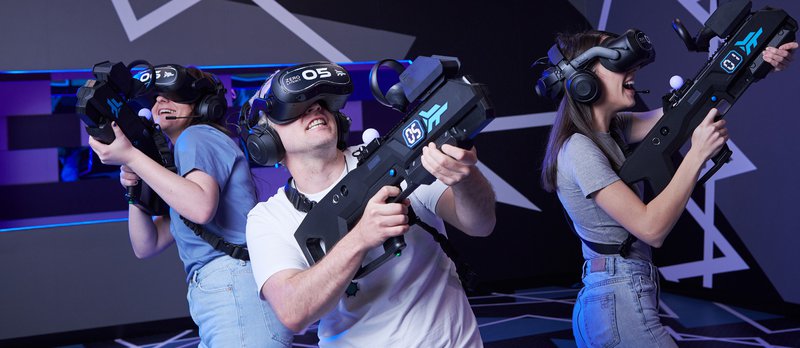
Pick Good Tech That Feels Invisible
Explore headsets that offer an untethered experience to enable free-roaming capabilities. Employing heavy cables in room-scale VR attractions can instantly remind players they are confined to a small space and have a headset strapped to their faces. Removing these barriers goes a long way to making players feel like they’re a part of the game.
With untethered hardware, though, there is a tradeoff. Since data is streamed wirelessly to the headset, you must strike a balance between picture quality and latency. When choosing a headset, ensure its processor is current with Wi-Fi 6E capabilities to deliver the highest picture quality possible and future-proof your investment. Test frequently for playability and comfort, and always err on the side of a smoother experience to avoid VR motion sickness.
Using more expensive yet higher-quality headsets will also add to that immersion. Higher resolution displays, wider field-of-view, and face, hand, and eye tracking will allow you to create more detailed, immersive experiences that feel natural for the player while providing increased longevity for your product.
That said, these technical specifications are not the sole draw for your attraction. They are merely a recommendation for providing the best quality experience for players.
We have to move beyond ‘it’s VR’ and exploiting the technology. Nobody says, ‘let’s go watch a movie in Dolby Surround Sound’ or ‘let’s go watch a 3D movie.’ People say, ‘Let’s go watch Avengers: Endgame in 3D.’”
—Ben Davenport, CEO, VRsenal
Bring on People Who Know How to Make Games
While there are a handful of VR games and experiences that have lasted on the market for several years, such as LAI Games’ attendant-free Virtual Rabbids: The Big Ride , the typical shelf-life for a VR game hovers around one to two years. The rapidly diminishing shelf-life of some VR games is leading to operators becoming more risk averse, especially as costs for buying, installing, and operating LBVR experiences continue to grow.
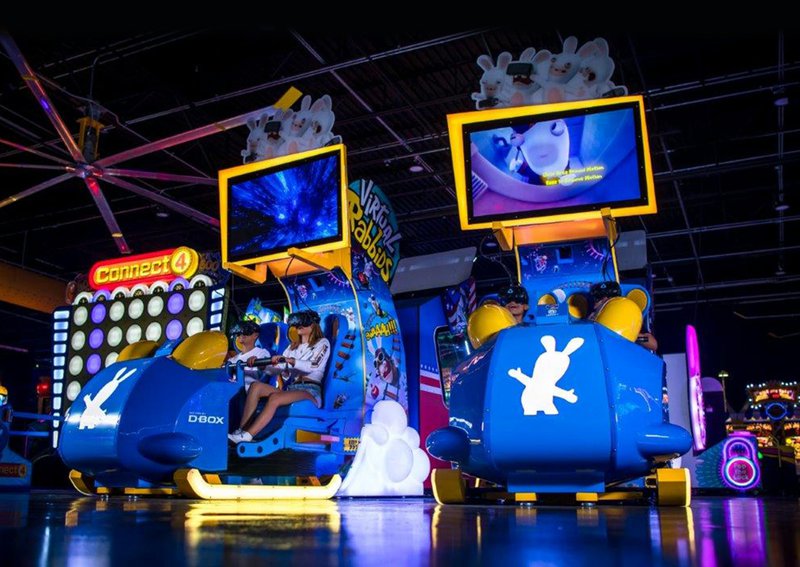
Shelf life has expanded for the successful games, the ones that get traction…In most of the other VR games I’ve seen, we’ve spent tens or hundreds of thousands of dollars on them, and the depreciation is awful. What I’m afraid of is that it’ll chase a lot of investment out of the marketplace because people are getting burned.”
—George Smith, President and CEO, Family Entertainment Group
The surest way to combat this problem and provide experiences that last is to make good games from the outset. This may seem like a no-brainer, but many VR attraction designers come from non-game design backgrounds. They’re able to make gorgeous or technically impressive experiences, but these attractions don’t have the depth of play that keeps people coming back days, weeks, or even years down the line.
Like building 3D models or making music, game design is its own set of skills that requires specialized knowledge of how multiple in-game systems interact and a keen understanding of player behavior. Bringing on game designers that know how to balance combat systems and optimize game feel will make your game stand out and increase its longevity on the market.
A lot of people come into VR from 3D effects, graphic design, or technology, but they’re not actually game developers. They don’t understand things like core loop, level design, and weapons balancing — all things that go into great games. If we made better games as an industry, they’d have more longevity. How long has Pac-Man been around? Or Tetris? People still play them because they’re well-designed games.”
—George Smith, President and CEO, Family Entertainment Group
Arm Developers With a Platform Built for the Future
Developers and operators need to know that their platform isn’t going to disappear after a year or two on the market. Your platform should support the following to maximise compatibility and futureproofing:
- Native Co-Location Software: For developing and deploying untethered multi-user VR gaming and training solutions. These tools enable developers to create and update experiences stable to enable long-term use.
- Mobile Device Management integration: For scaled management of remote devices, creating and maintaining user profiles, locking hardware use to specific attractions, and other necessary functions. Most VR devices use Android Open Source Project for MDM integration.
- OpenXR: A popular, open-source VR runtime package that enables software to work with multiple HMD devices across PC and mobile platforms.
- Offline Steam Runtime: For applications built with SteamVR, the offline runtime package allows attractions to operate securely without the need to connect VR systems to the internet. For example, HTC offers exclusive access to an offline version of SteamVR to enable the use of VIVE’s sub-millimeter room-scale tracking system.
Implementing hardware with inside-out tracking is also a massive boon for location-based software services. This tracking enables a custom VR footprint, allowing operators to fit their attraction to the available space and enabling them to switch users in and out without the need to configure the necessary VR boundaries each time.
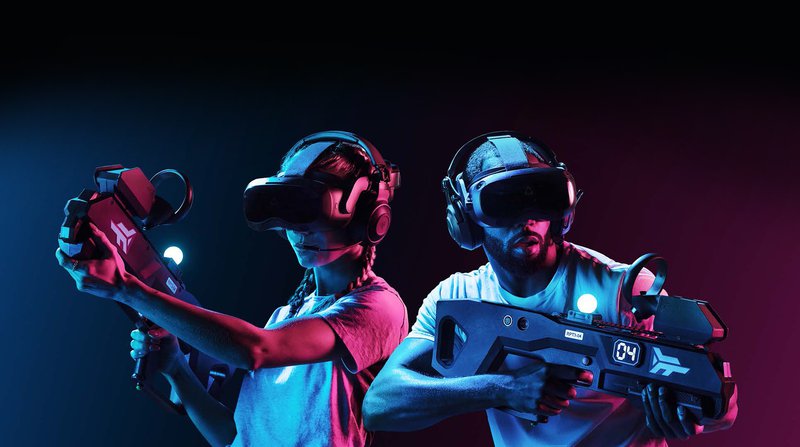
Focus on Simple, Approachable Experiences
It’s tempting to build the biggest and baddest experience right out of the gate. Still, as exciting as large, complex setups can be for those already familiar with the technology, they can be intimidating for curious players looking to get their VR sea legs. Recent data shows that over 75% of consumers still haven’t tried virtual realty , and the novelty of VR on its own hasn’t been enough to sell them. To draw these new players in and expand the market, they will need to be reached with simple, accessible, and intuitive experiences.
Those of us who have been in the VR industry for a while sometimes take basic things for granted, so you need to look at attractions through fresh eyes as if you’re a ten-year-old or an adult who has never touched VR before. Is the game approachable? Is it fun, is it easy to learn, is it easy to pick up and play and enjoy?”
—Armando Lanuti, President and Owner, Creative Works
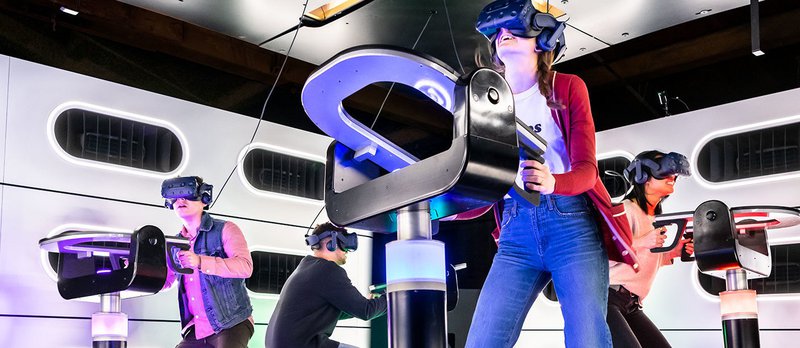
Designing attractions that are simple to grasp and easily approachable can help those newcomers take the leap. Plus, relying on less complex hardware configurations, such as VRsenal’s attendant-free Monolith, ensure operators can provide robust VR attractions with minimal upkeep. Good game design should be easy to intuit and immediately fun — let your design inform your hardware setup.
There’s a huge market here. Making it robust and simple to access is important. There’s a whole world out there that has yet to experience VR. There’s a lot of green field to play within, but it has to be done with good, thoughtful approaches.”
—George Smith, President and CEO, Family Entertainment Group
Create a Variety of Experiences
That’s not to say you should avoid making one of those massive, headline-grabbing VR attractions. It’s just important to avoid limiting yourself to one style of experience and design a range that can appeal to multiple audiences of varying skill levels.
From simple rhythm games like Space Dance Harmony by Phenomena to the room-filling VR playgrounds of Octopod , the entire VR industry benefits when there are diverse options for everyone.
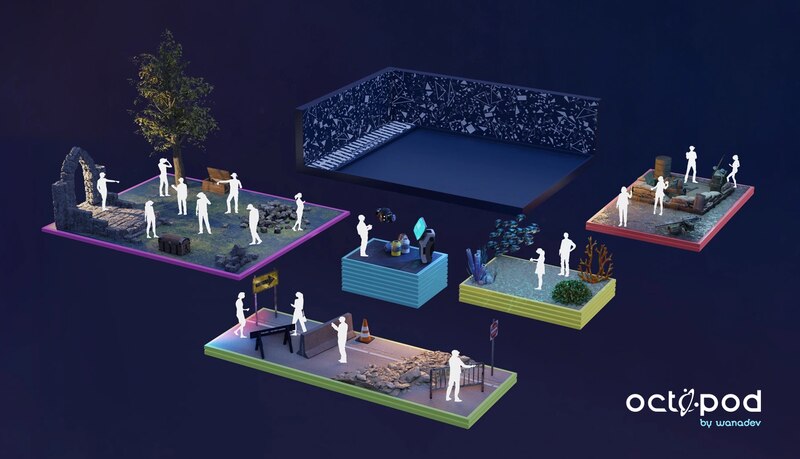
Envision the Entire Chain, From Set-up to Play
Making a good game isn’t enough. You must consider every interaction someone will have with your game. These are just a few of the things you should keep in mind when designing your attraction:
- How will your product be shipped to operators?
- How will operators install it?
- Will operators need to staff it?
- How will players interact with the hardware?
- How difficult will it be to maintain?
Here are some tips to ensure your attraction can keep operators just as happy as your players.
Think About Your Player Onboarding Process
They say you don’t get a second chance to make a first impression, and that’s especially true for VR. New players who have a bad first time — whether the game is too complex, induces motion sickness, or doesn’t work as intended — can sour someone on the entire industry for life.
Ensure that you’ve rigorously tested your onboarding process with a spectrum of new and experienced players and that documentation and operator instructions are as detailed and intuitive as possible. The VR hardware should be a natural extension of what the player expects it should do.
The biggest thing we’ve had to learn is the human-to-machine interface, how someone who has never used VR before puts a headset on, how to use the controllers, where the buttons are. Pay attention to what people are inclined to do already and develop products that fit those inclinations. It’s hard to reprogram people.”
—Ben Davenport, CEO, VRsenal
One million visitors have tested UNIVRSE's system in venues worldwide. Robust hardware and software ensure that non-technical staff can promptly address and manage technical issues on-site. UNIVRSE delivers a quick setup, smooth onboarding, and overall great experiences.
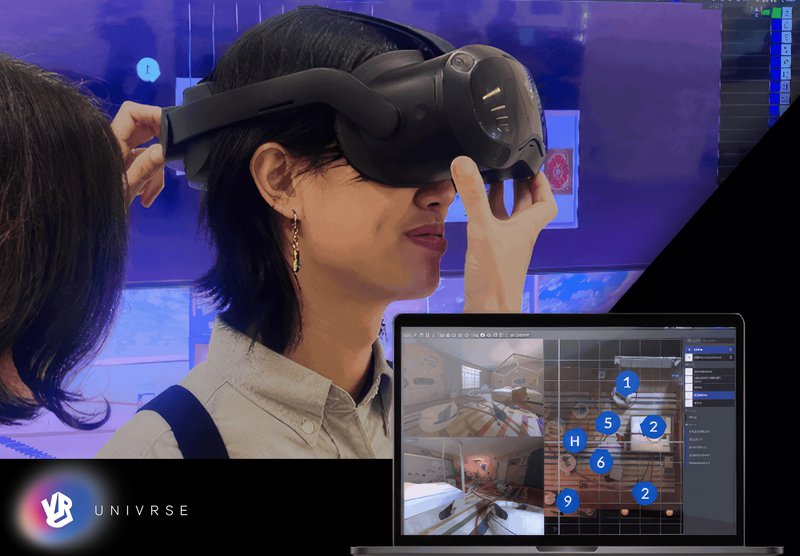
Put Yourself in the Shoes of an Operator
VR attractions are meant to run for multiple hours a day, every day, for several days a week. Even the best attraction will buckle under the demand if the hardware cannot withstand constant public use.
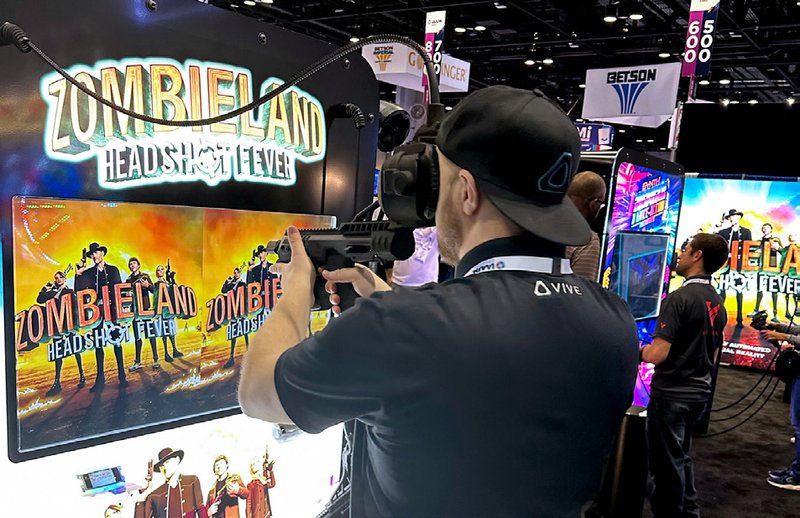
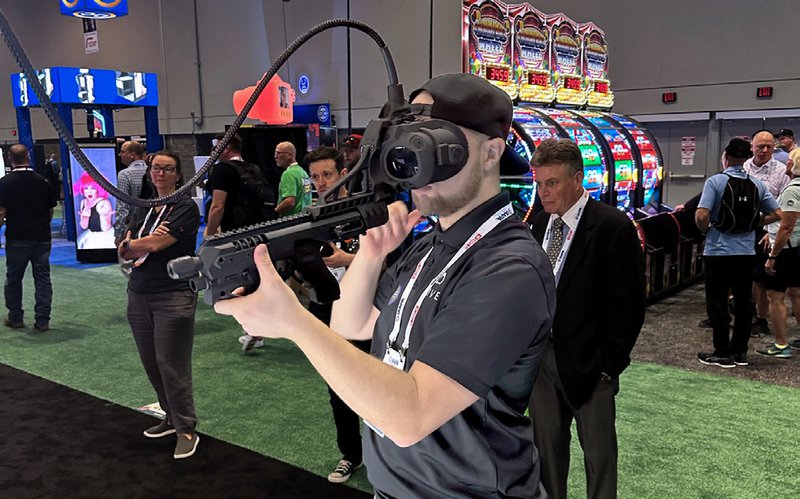
We’re always looking at attractions through the lens of the customer experience — is this fun and approachable — but on the operations experience as well. What’s the uptime? How easy is it to maintain the equipment, start a game, to manage throughput? What’s the staffing level to run the game? VR enthusiasts will often come up with a great concept and a great design, but it needs to be run by someone with operations experience.”
—Armando Lanuti, President and Owner, Creative Works
A few items to consider that can drastically improve the operation of your VR attraction:
- Staffing: Unless you’re designing attendant-free hardware, your attraction will likely need staff to operate. Many entertainment centers have trouble retaining employees, so how can you make the game operable with minimal staff? How easy is the game to set up? Will operators need to schedule staff around busy or slow days? How can operators minimize the times the attraction is not in use and maximise revenue when it is in use?
- Repairability: Operators cannot afford to let broken hardware languish. Think about how you can make the game easy to install and repair. Will the operator need to contract a special service team, or can location staff be properly trained to repair and maintain?
- Throughput: How long does it take players to move through the game, from onboarding to disembarking? How long does it take to reset games between rounds? Too much downtime will lead to diminished profits, which can lead operators to pick something with higher KPIs.
- Revenue per square foot: Arcades often map out revenue per square foot down to the attraction and machine level to optimize performance. Some VR attractions take up an enormous amount of square footage, so that tradeoff needs to pay off.
Omni Arena has done a great job at building systems for the employees to use. The player registers in advance, they select the size of the harness they need, the shoe size. When it’s time to move from the lobby into the playing arena, there are big screens behind each Omni treadmill showing the player’s name and the equipment size. They’ve done a brilliant job at making it easy for the staff or the player to get into it because it’s so new for everyone involved.”
—Bob Cooney, Author, Entrepreneur, and VR Expert
The Takeaway
Whether you’re crafting a virtual roller coaster with a self-service hardware station, or are devising an action-packed free-form multiplayer shooter, here are the key takeaways to consider when building your LBVR attraction:
- Qualify your hardware: Many VR products follow a consumer lifecycle of around two or three years, so look for a hardware partner invested in VR for the long haul. They should offer easily repairable HMDs, development, and maintenance support.
- The Novelty of VR is Gone: Once, simply offering access to VR technology was enough to drive revenue, but as the public has become more familiar with it — or has their own VR equipment at home — this is no longer sufficient. Bring on game designers to create experiences that players will return to, let the tech elevate the design, and develop a variety of experiences; from approachable games for newbies to destination attractions that will thrill hardcore players.
- Envision the Entire Chain: Remember that players aren’t the only people who will interact with your attraction. Optimizing how operators and owners install, maintain, and use your attraction will ensure they can maximise their return on investment without dealing with unnecessary downtime.
If you're interested in free-roam VR esports and arenas, take a look at our EVA case study . If you’re looking for guidance on where to start with any of these aspects of LBVR attraction development, contact HTC VIVE.
About HTC VIVE
HTC VIVE is the premier extended reality (XR) platform and ecosystem that creates true-to-life VR experiences for businesses and consumers. The VIVE ecosystem is built around premium XR hardware, software, and content. The VIVE business encompasses best-in-class XR hardware; Software; VIVE Business+ with Location-Based Software Suite (LBSS), VIVE Business Streaming (VBS), VIVERSE for Business, and more for business customers.
About the Contributors

Bob Cooney
Bob Cooney is a virtual reality speaker, author, futurist, and entrepreneur. An Inc. 500 CEO, Bob has launched nine start-ups with multiple exits and a successful NASDAQ IPO and has educated VR creatives, suppliers, and operators worldwide for over 25 years. Learn more VR insights from Bob at bobcooney.com

Armando Lanuti
Armando Lanuti is the President and Owner of Creative Works , an award-winning, full-service partner for designing, fabricating, installing, and successfully running amusement experiences. Creative Works has designed laser tag, escape rooms, mini golf, and VR attractions for theme parks, fun centers, restaurants, resorts, and other venues for over 20 years.
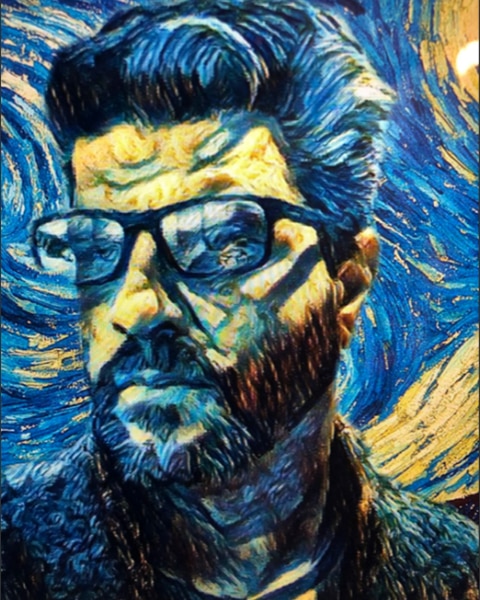
Ben Davenport
Ben Davenport is the CEO of VRsenal , a designer of fully automated and unattended VR games and experiences. Its flagship product, the Monolith, features a small, 7.25 square foot footprint, armored, commercial-grade HTC headsets, VR-ready PC hardware, and the arcade-exclusive Rhythmatic 2.

George Smith
George Smith is the President and CEO of Family Entertainment Group , an industry leader in gameroom and entertainment design, development, consultation, and operations. With over 30 years of experience in the entertainment and amusement industry, George has provided consulting, operations, and business development for world-class amusement parks, resorts, and family entertainment centers.